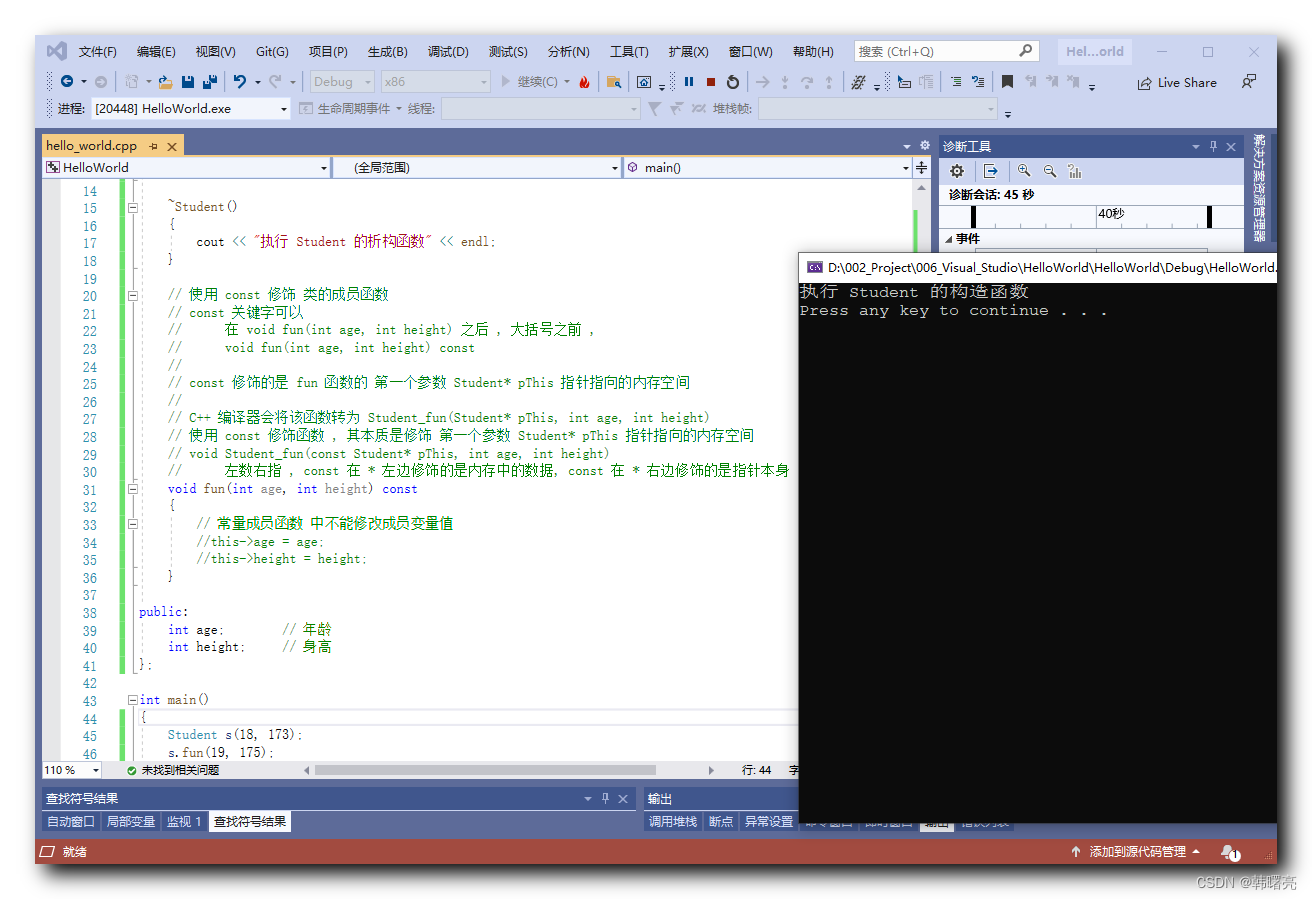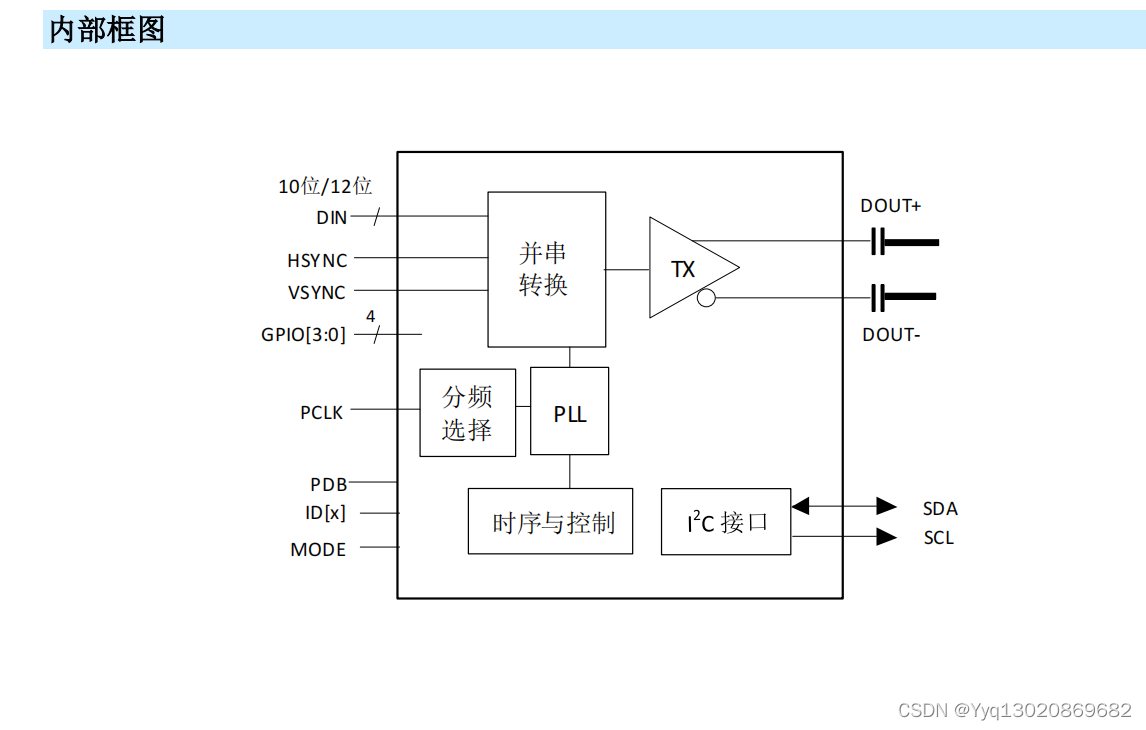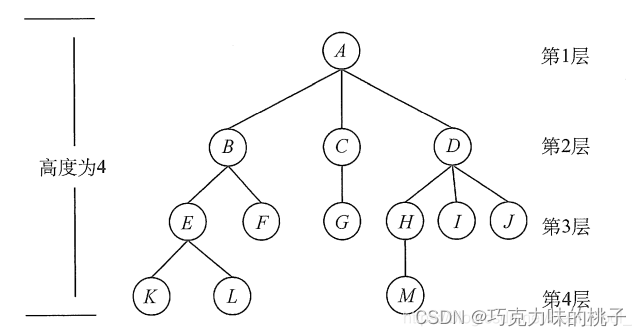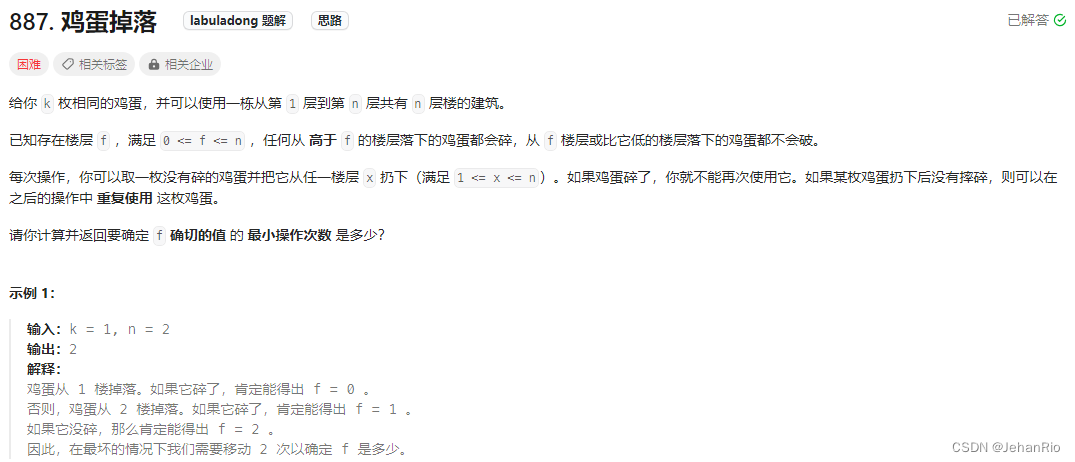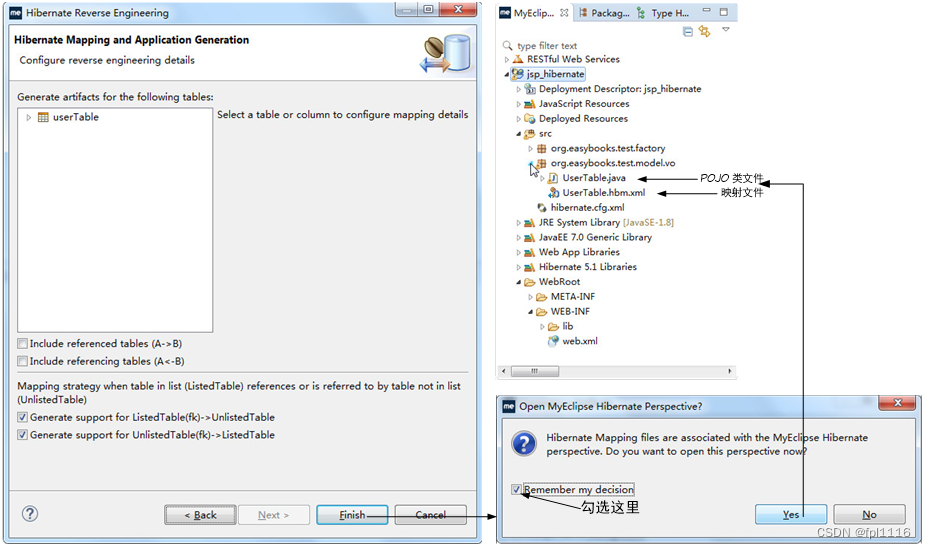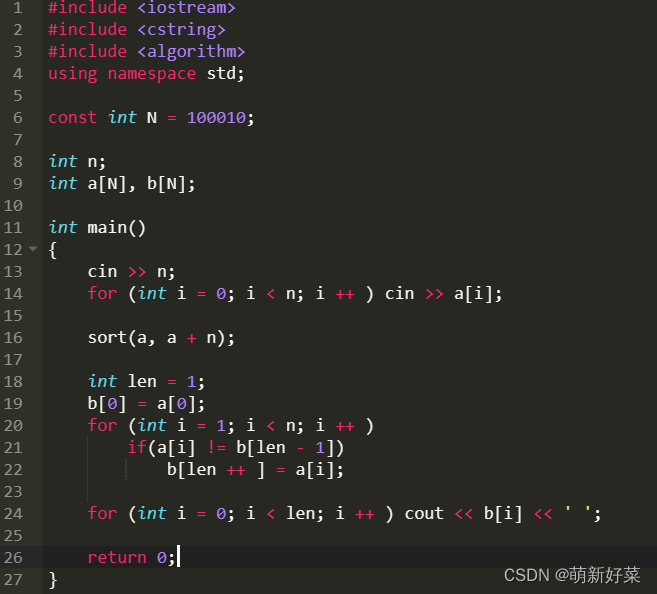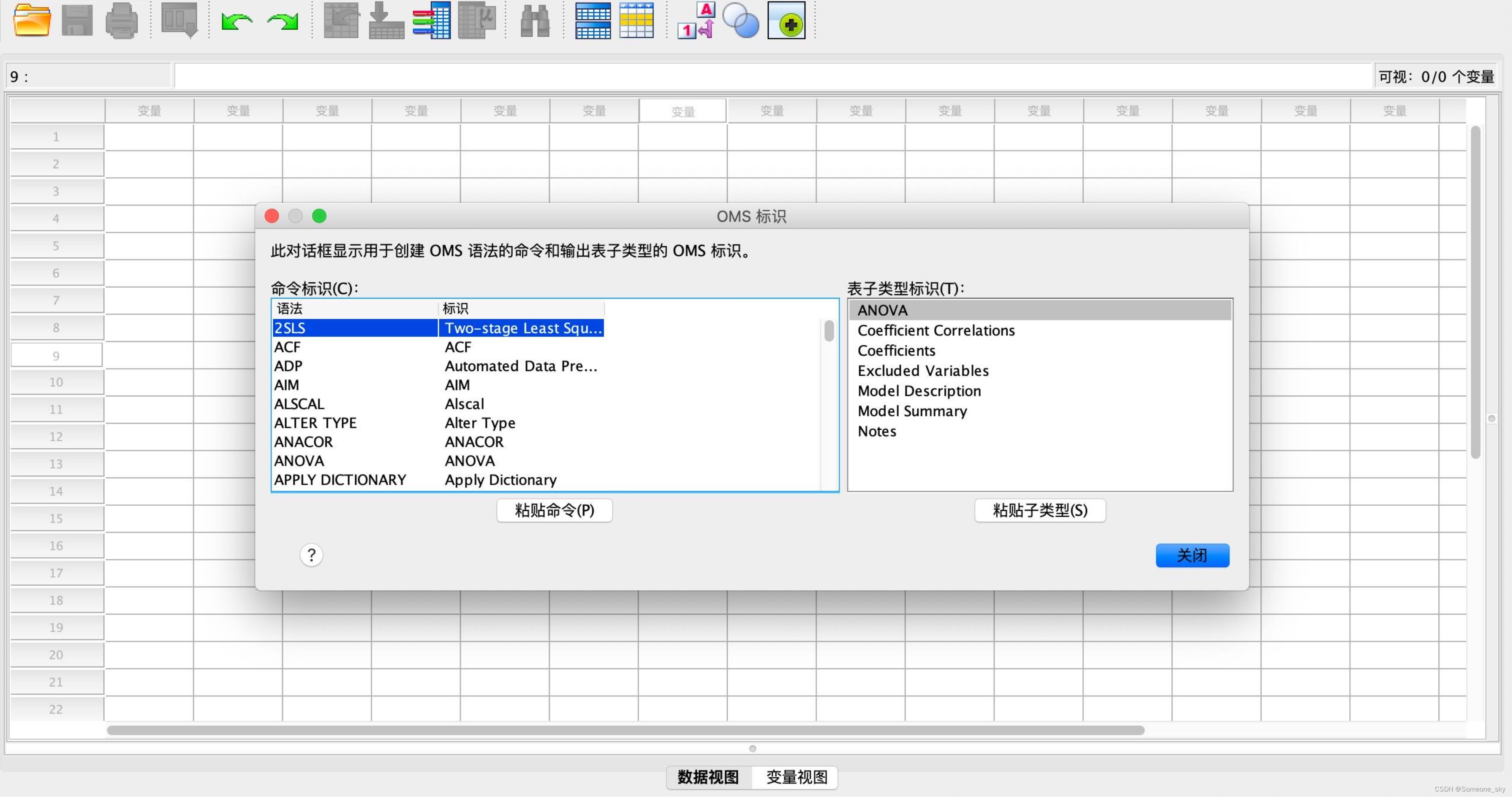文章目录
- 一、常量成员函数
- 1、const 修饰成员函数分析
- 2、常量成员函数
- 3、错误代码示例 - 常量成员函数修改成员变量
- 二、完整代码示例
一、常量成员函数
1、const 修饰成员函数分析
在 C++ 类中 , 普通的非静态成员函数 , 可以使用 const 进行修饰 ,
在 下面的 Student 类中 , 定义了 void fun(int age, int height) 成员函数 , 下面使用 const 关键字修饰该类 ;
使用 const 修饰 成员函数 , 写法如下 , 在 fun() 之后使用 const 关键字修饰 函数 :
void fun(int age, int height) const
const 修饰的是 fun 函数的 第一个参数 Student* pThis 指针指向的内存空间 ;
C++ 编译器会将
void fun(int age, int height)
函数转为对应的 C 语言函数
Student_fun(Student* pThis, int age, int height)
使用 const 修饰函数 , 其本质是修饰 第一个参数 Student* pThis 指针指向的内存空间 和 指针本身 ;
将
void fun(int age, int height) const
转换为 C 语言代码为 :
void Student_fun(const Student* const pThis, int age, int height)
左数右指 , const 在 * 左边修饰的是内存中的数据, const 在 * 右边修饰的是指针本身 ;
代码示例 :
class Student
{
public:
// 使用 const 修饰 类的成员函数
// const 关键字可以
// 在 void fun(int age, int height) 之后 , 大括号之前 ,
// void fun(int age, int height) const
//
// const 修饰的是 fun 函数的 第一个参数 Student* pThis 指针指向的内存空间 和 指针本身
//
// C++ 编译器会将该函数转为 Student_fun(Student* pThis, int age, int height)
// 使用 const 修饰函数 , 其本质是修饰 第一个参数 Student* pThis 指针指向的内存空间
// void Student_fun(const Student* pThis, int age, int height)
// 左数右指 , const 在 * 左边修饰的是内存中的数据, const 在 * 右边修饰的是指针本身
void fun(int age, int height) const
{
//this->age = age;
//this->height = height;
}
public:
int age; // 年龄
int height; // 身高
};
2、常量成员函数
使用 const 关键字 修饰成员函数 , 会将 成员函数 转化为 " 常量成员函数 " ;
" 常量成员函数 " 中 操作限制 :
- 不能修改成员变量 : 不能修改 任何 成员变量 值 , 静态成员变量 与 非静态普通成员变量 都不能修改 ;
- 不能调用非常量成员函数 : 只能调用 " 常量成员函数 " , 不能调用 非常量成员函数 , 以保证不会修改 成员变量 ;
" 常量成员函数 " 只能访问
- 常量成员变量
- 其它常量成员函数
如果类的 成员变量 不是 常量 , 那么 " 常量成员函数 " 不能访问它们 ;
public:
int age; // 年龄
int height; // 身高
如果类的 成员变量 是 常量 , 那么 " 常量成员函数 " 可以访问它们 , 注意 : 只能访问 , 不能修改 ;
public:
const int age; // 年龄
const int height; // 身高
如果 成员函数 被 const 关键字 声明为 常量成员函数 , 则在该函数中 不能修改 类对象中的 任何成员变量 ;
class Student
{
public:
void fun(int age, int height) const
{
//this->age = age;
//this->height = height;
}
public:
int age; // 年龄
int height; // 身高
};
3、错误代码示例 - 常量成员函数修改成员变量
错误代码示例 :
class Student
{
public:
// 带参构造函数
Student(int age, int height)
{
this->age = age;
this->height = height;
cout << "执行 Student 的构造函数" << endl;
}
~Student()
{
cout << "执行 Student 的析构函数" << endl;
}
// 使用 const 修饰 类的成员函数
// const 关键字可以
// 在 void fun(int age, int height) 之后 , 大括号之前 ,
// void fun(int age, int height) const
//
// const 修饰的是 fun 函数的 第一个参数 Student* pThis 指针指向的内存空间 和 指针本身
//
// C++ 编译器会将该函数转为 Student_fun(Student* pThis, int age, int height)
// 使用 const 修饰函数 , 其本质是修饰 第一个参数 Student* pThis 指针指向的内存空间
// void Student_fun(const Student* pThis, int age, int height)
// 左数右指 , const 在 * 左边修饰的是内存中的数据, const 在 * 右边修饰的是指针本身
void fun(int age, int height) const
{
this->age = age;
this->height = height;
}
public:
int age; // 年龄
int height; // 身高
};
执行结果 :
已启动生成…
1>------ 已启动生成: 项目: HelloWorld, 配置: Debug Win32 ------
1>hello_world.cpp
1>D:\002_Project\006_Visual_Studio\HelloWorld\HelloWorld\hello_world.cpp(33,7): error C3490: 由于正在通过常量对象访问“age”,因此无法对其进行修改
1>D:\002_Project\006_Visual_Studio\HelloWorld\HelloWorld\hello_world.cpp(34,7): error C3490: 由于正在通过常量对象访问“height”,因此无法对其进行修改
1>已完成生成项目“HelloWorld.vcxproj”的操作 - 失败。
========== 生成: 成功 0 个,失败 1 个,最新 0 个,跳过 0 个 ==========

二、完整代码示例
代码示例 :
#include "iostream"
using namespace std;
class Student
{
public:
// 带参构造函数
Student(int age, int height)
{
this->age = age;
this->height = height;
cout << "执行 Student 的构造函数" << endl;
}
~Student()
{
cout << "执行 Student 的析构函数" << endl;
}
// 使用 const 修饰 类的成员函数
// const 关键字可以
// 在 void fun(int age, int height) 之后 , 大括号之前 ,
// void fun(int age, int height) const
//
// const 修饰的是 fun 函数的 第一个参数 Student* pThis 指针指向的内存空间 和 指针本身
//
// C++ 编译器会将该函数转为 Student_fun(Student* pThis, int age, int height)
// 使用 const 修饰函数 , 其本质是修饰 第一个参数 Student* pThis 指针指向的内存空间
// void Student_fun(const Student* const pThis, int age, int height)
// 左数右指 , const 在 * 左边修饰的是内存中的数据, const 在 * 右边修饰的是指针本身
void fun(int age, int height) const
{
// 常量成员函数 中不能修改成员变量值
//this->age = age;
//this->height = height;
}
public:
int age; // 年龄
int height; // 身高
};
int main()
{
Student s(18, 173);
s.fun(19, 175);
// 控制台暂停 , 按任意键继续向后执行
system("pause");
return 0;
}
执行结果 :
执行 Student 的构造函数
Press any key to continue . . .
